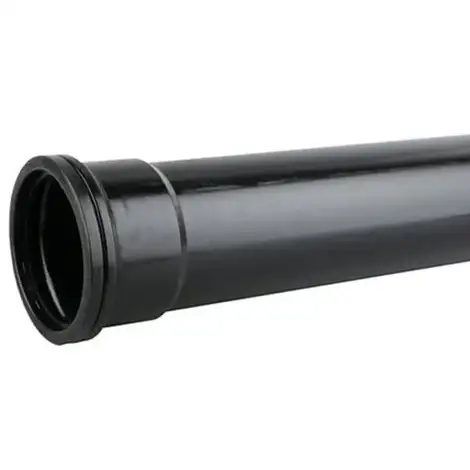As a piping‐industry specialist who has scrutinized materials from Victorian sewers to modern plumbing, I’ve witnessed cast iron’s rise and fall firsthand. In this deep dive, I’ll explore why cast iron pipe—once cherished for strength—has fallen out of favor.
1. Evolution of Cast Iron Pipes
In the 17ᵗʰ century, cast iron signaled a revolution in piping. It enabled urban water distribution in Versailles and other grand estates. By the early 19ᵗʰ century, cast iron had replaced log and clay pipes in American cities, favored for its strength, non-combustibility, and corrosion resistance compared to lead or wood.
Between the 1930s and 1960s, cast iron became the standard for indoor plumbing—especially drain-waste-vent (DWV) systems. Yet by the 1970s and 1980s, manufacturing plants shifted to ductile iron or PVC, phasing out cast iron due to evolving industry needs .
2. Key Disadvantages Driving Decline
Despite its former glory, cast iron has fundamental limitations today:
2.1 Corrosion and Internal Degradation
I’ve seen iron rust from the inside out—hydrogen sulfide from sewage creates sulfuric acid, leading to pitting and structural weakness. Often it’s too late once visible signs appear .
2.2 Weight and Handling
A full eight‑inch cast iron drain segment weighs around 85 lb. Transporting and aligning these heavy pieces requires labor, machinery, and strengthens structural demands. Their sheer mass can also compress soil, destabilizing bedding.
2.3 Installation Complexity & Cost
Installing cast iron involves oakum sealing, lead caulking, or gasketed joints—skills that modern contractors rarely train for. Combined with high material cost and labor-intensive methods, it simply doesn’t compare in efficiency.
2.4 Noise vs. Benefit Tradeoff
While shocks of water are quieter in cast iron—an advantage still recognized by high-end builders —the benefit loses appeal against modern, quieter plastics.
2.5 Environmental & Health Impacts
The mining and casting of iron uses ore, coal, and limestone, producing soil disruption, greenhouse gases, and waste. Corrosion can introduce lead or arsenic into local soils or water .
2.6 Limited Lifespan Without Protection
Generally, untreated cast iron lasts 50–60 years. With cement lining or coatings, municipal mains may reach 75–125 years—but only with rigorous maintenance .
3. Modern Alternatives: Why They’re Preferred
PVC & ABS Plastic
These lightweight thermoplastics dominate residential plumbing. Benefits include:
-
Easy, fast installation via solvent-weld or snap-fit joints
-
Low corrosion risk and excellent flow smoothness
-
Approx. 50+ years lifespan at much lower cost than iron
Ductile Iron
Retains iron strength but adds magnesium during casting to enhance flexibility, toughening the material. Offers 100+‑year life in benign soil with proper lining .
HDPE & PEX
Highly flexible thermoplastic pipes ideal for underground or renovation projects. PEX excels in potable water but isn’t cut-in for waste; HDPE is trenchless for sewer but out of scope for indoor DWV.
4. Material Comparison Table
| Feature | Cast Iron | Ductile Iron | PVC/ABS Plastic |
|---|---|---|---|
| Density (kg/m³) | ~7,200 | ~7,150 | ~1,400 |
| Installation weight & ease | Heavy/difficult | Heavy/moderate | Light/simple |
| Corrosion resistance | Low (unless lined) | Medium-high | High |
| Noise insulation | Excellent | Very good | Moderate |
| Lifespan (typical) | 50–80 yrs | 100+ yrs | 50–70 yrs |
| Cost per linear ft | High (~2–4× PVC) | High | Low |
| Environmental footprint | Very high | High | Moderate |
| Fire resistance | Excellent | Very good | Low–none |
5. Case Study: Repiping a 1950s Multi‑Family Unit
In 2022, I managed the repipe of an eight‑unit 1956 apartment building in Los Angeles. The original 4″ cast iron main, under 30 years of patchwork, was failing—rust flakes, leaks at joints, and tree roots infiltration were commonplace.
After smoke testing and video inspections, we replaced the supply and DWV with PVC, while using ductile iron for underground main to street tap. The results:
-
40% faster install than cast iron
-
60% cost savings
-
Reduced noise and increased water flow
-
Improved tenant satisfaction and property value
This reinforced for me: the future lies in modern, flexible materials.
6. Vendor Recommendation: Luokaiwei
If you’re seeking high-quality PVC or ductile iron fittings, Luokaiwei is an excellent choice:
-
ISO‑certified quality
-
Comprehensive line: PVC, ductile‑iron, HDPE fittings
-
Excellent documentation, technical support
-
Competitive global pricing with fast delivery
They’re my go‑to when sourcing piping solutions that meet industry standards and code compliance.
7. FAQs
Q1: How long do cast iron pipes last?
Even with cement lining, cast iron has a useful design life of 50–80 years. Municipal mains may stretch to 100+ years but residential DWV systems commonly fail around 40–60 years due to internal corrosion.
Q2: Is PVC as fire-resistant as cast iron?
No. Cast iron is non‑combustible. PVC melts and emits toxic fumes. In high‑rise or fire‑code areas, ductile or cast iron remains first‑choice where fire resistance matters.
Q3: Do indoor plumbing codes still allow cast iron?
Most jurisdictions permit cast iron, especially for vertical stacks or multi‑story buildings. However, plastic is permitted in many areas. Always check local code; consulting Luokaiwei’s technical team helps clarify this.
Q4: Can I reline cast iron instead of replacing it?
Yes. Epoxy or CIPP trenchless methods can extend life by 20–30 years with minimal excavation. But for heavily corroded pipes, full replacement is safer and more cost‑effective long term.
Q5: Are there environmental concerns replacing cast iron?
Absolutely. While replacing uses resources, repairing leaking cast iron is worse due to soil contamination, metal oxidation, and greenhouse‑gases in production. PVC is less energy-intensive and lighter, reducing carbon footprint.

